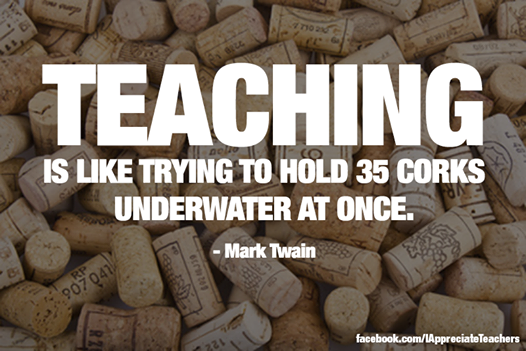Today was about the conversations. I was able to connect with a number of the people I respect and admire who I communicate with online most of the year. One of the conversations was with Vinnie Vrotny who is one of the people whose work with MakerSpaces is an inspiration for me.
Vinnie and I talked about creativity and how it seems that too often we school the creativity out of students. Makerspaces with their open ended projects are a way to encourage students to recover and hold on to their creativity. In my visits to the exhibit hall I have been looking at creative maker space sorts of tools. There are a good number of them.
Another conversation was with Cameron Evans who is a education CTO with Microsoft. He was pointing out that there is a lot of the same every year in the exhibit hall.. Largely the same companies showing the same sorts of things, albeit in new versions, in isolation Cameron’s thought was that it would be interesting if ISTE got a bunch of companies to set their products up in a sample classroom of the future. It’s an interesting idea. A virtual school with different rooms set up by different groups of companies might be very interesting.
Some things do change though. The blogger café is not as it once was. Having a space with chairs and places to plug in technology is great. At the same time the community is not what it was in the early, pre-power and chairs, days. A lot of people there are not big social media people are there. And that is fine. IT makes it a little harder for the bloggers/tweeters/etc to find each other. Not as easy but not impossible. I managed to find someone pretty much every time I stopped by. So better or worse doesn’t really mean anything – different is the word.
In the area of computer science I am seeing a little more this year than last. Most of it this year is focused on elementary schools. Code.Org logos are on almost every poster or playground session that involves coding for elementary schools. My interpretation is that code.org is energizing a lot of teachers. It will be interesting to see how that develops.
Speaking of code.org, the organizations founder Hadi Partovi was on a panel at ISTE debating the idea that CS should be required for all students. The discussion covered the usual points. Thinks like a shortage of trained teachers, trouble fitting it in the schedule and money of course. It was pointed out that most of the money these days goes to the things that standardized tests test. I think the session was attended mostly by people who already believe that all high schools (at least) should offer CS even if not a required course. I don’t know it if changed any minds but it was interesting.
Tomorrow is the last day and I am looking forward to the maker space playground.


 Keep Calm Computing posters
Keep Calm Computing posters





